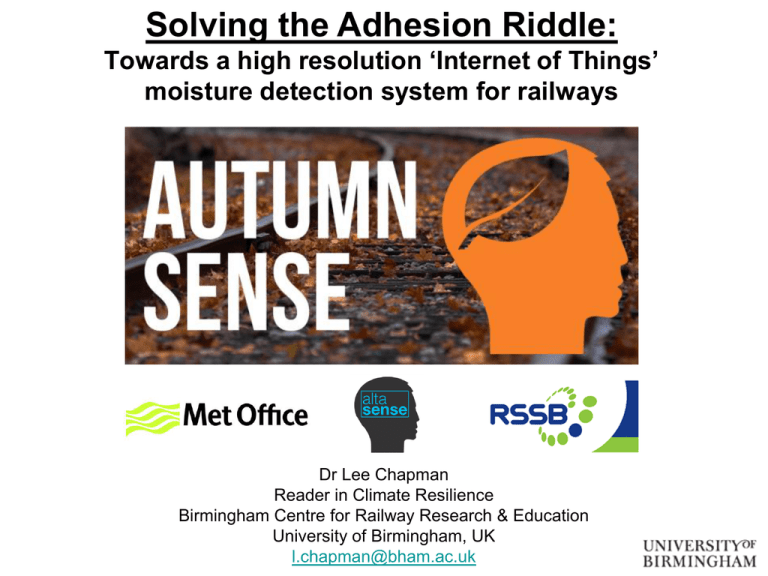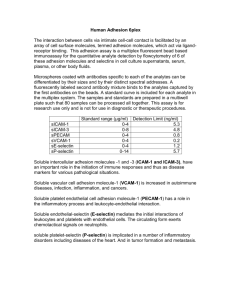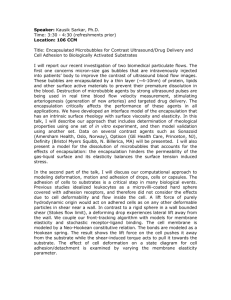Solving the Adhesion Riddle: Towards a high resolution ‘Internet of Things’
advertisement

Solving the Adhesion Riddle: Towards a high resolution ‘Internet of Things’ moisture detection system for railways Dr Lee Chapman Reader in Climate Resilience Birmingham Centre for Railway Research & Education University of Birmingham, UK l.chapman@bham.ac.uk Why improved moisture detection? • High resolution forecast systems for low adhesion now exist – Facilitate mitigation of adhesion through better, targeted operation of Rail Head Treatment Trains in areas where adhesion is predicted to be low. – Justify actions to alter ‘plans of the day’ when forecast conditions change. – Enable special time tables to be removed on good days or in areas where adhesion is predicted to be good thereby improving performance. • Q1: How can they be verified to improve user confidence? • A: High resolution (low-cost) moisture measurements. – Can also feed directly into Adhesion Management Systems • Q2: How can this be done? The Internet of Things • Literally means things that connect to the internet – – – – Computers Smart Phones Curtains, lights, central heating... Sensors • AutumnSense inspired by a sensor developed by the University of Birmingham for an urban heat island project • Bespoke self contained air temperature sensor was designed to produce a high resolution network across the city: – Comms provided via a wireless communication card – Power provided from a Lithium-Thionyl Chloride battery which last for 3 years under ideal conditions – Very cheap - £87! – Tested at UKMO calibration lab with an absolute error of ±0.22°C • Can be deployed anywhere where there is a WiFi network Low Cost Moisture Sensors • Same low cost technology (<£100) now modified for use on this project • Thermistor replaced with a leaf wetness sensor to be attached to a dummy rail • Various options for data collection – Local logging on device (10000 points on flash memory) – Accessed locally via smartphone in real-time – Sent over internet remotely to server at University where it is archived Laboratory Tests Field Trial Next Steps • Successful trial but now there is a need to: – Deploy a small network of sensors within a resilient Wi-Fi network to fully demonstrate the potential of the approach. – An extended trial over a longer time period is required – Continued funding to investigate and improve trackside internet connectivity (e.g. 700Mhz T795). Whilst the benefits of this extend beyond sensor networks, the availability of a wireless mesh will facilitate not only the widespread moisture measurements discussed but also other condition monitoring data such as temperature. – Continued dialogue with the industry to ascertain the exact requirements of a high resolution adhesion detection system Questions? Dr Lee Chapman Reader in Climate Resilience Birmingham Centre for Railway Research & Education University of Birmingham, UK l.chapman@bham.ac.uk




